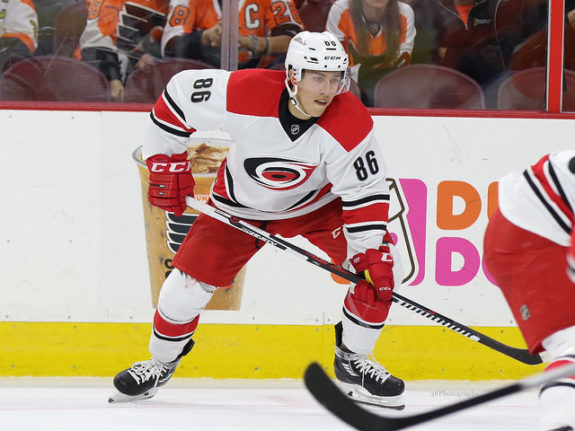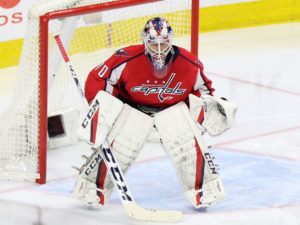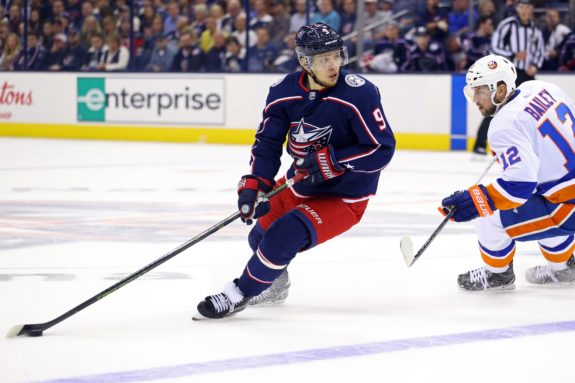I want to emphasize that this isn’t another article talking about the how the loser point has kept the standings close. I don’t want to talk about how a three point system could be better than a two point system or how the shootout needs to go away.
Most of these issues have been thoroughly covered over the past few weeks and anything else would just overdo it. So I thought I’d look at how the salary cap has led to the NHL’s parity being the best in pro sports.
Salary Cap is in the ‘Perfect Dollar Window’
Unless your favorite hockey team is the Colorado Avalanche or Arizona Coyotes, your team likely had some sort of playoff hope at the trade deadline no matter how small. The biggest reason behind this has been the salary cap and the parity that arose from it.
Since its implementation following the 2004 lockout, the salary cap has ensured competitiveness among all 30 teams. By consistently setting the salary cap in a rising window each season, it allows to teams to maintain some of their talent, but also forces the best teams to have to lose high-level players that they can’t afford.
It’s this loss of talent to other teams which allows previously poor teams to become competitive again. In the last pre-salary cap season (2003-04) there were nine teams that missed the playoffs by 15 points or more. In 2015-16, that number was down to four.
https://twitter.com/NHLnumbers/status/834508236258676736
In order to create cap space, teams must make lucrative transactions to alleviate their crunch. Oftentimes it’s the teams that kept a lot of cap space for whatever reason, that reap the rewards of these crunches.
Two trades last summer showed the extent of the acquisitions a team can make by capitalizing on other teams’ financial missteps.

First, the Carolina Hurricanes acquired Teuvo Teravainen and Bryan Bickell ($4 million cap hit) from Chicago for two draft picks. Two months later the Arizona Coyotes acquired Lawson Crouse and Dave Bolland ($5.5 million cap hit) from Florida for two draft picks.
By being able to utilize their unused cap space, the Hurricanes and Coyotes were able to also pick up solid prospects for their future while Chiacgo and Florida got much needed cap space. In turn, both of these teams will become more competitive as the prospects develop and will contribute to overall balance of power that runs across the NHL.
NHL’s Financial Rules Make the League Stronger
The NHL has the firmest financial rules regarding salary out of the four major North American leagues. Compared to salary rules of other leagues, the NHL’s stringent nature means that a team can’t simply back out of bad contracts after one year like teams can in the NFL.
It also means teams can’t go over the cap (barring LTIR) for any reason, unlike the NBA where there’s things like a mid-level exception that allow you to go over. In the NBA, 16 of the league’s 30 teams are currently over the cap. In the MLB there’s no salary cap, which is why we see the usual teams excel for the most part every single year because they have the money to spend.
The NHL’s salary cap keeps teams honest and carefully planning the financial ramifications of every transaction they make. As teams resources become strained trying to keep all of their top players, it means some players must hit the open market. As a result of these players leaving, it redistributes the wealth of talent across the league. Coupled with the draft, it results in the league’s balance of power consistently shifting.
Poking around some old NHL standings and this caught my attention. Bottom six teams in 2005-06 includes a who's who of this year's elite. pic.twitter.com/sxvSkaNglP
— Darren Haynes (@DarrenWHaynes) March 22, 2017
Teams are Balanced as a Result
Each team in the NHL has its star players. Even the weaker teams have a few elite players. Again that’s where the NHL sets itself apart from other sports leagues.
As the Stanley Cup Playoffs have shown, it’s just as important for teams to focus on depth throughout their lineup, rather than focusing on acquiring a few elite players.
It’s the teams that have been able to form a lineup where all 12 forwards and 6 defensemen are fulfilling their roles and creating a team chemistry that leads to victories and moving up the standings. The best teams in the NHL don’t necessarily have the most superstars, but they certainly help.
If you look at the Avalanche, you’ve got your star players in Nathan MacKinnon, Matt Duchene, and Gabriel Landeskog, but their supporting cast can’t carry their own weight and that’s why the Avs are where they are.

If there’s one position that can truly set teams apart it’s the men between the pipes. Goaltenders are the biggest difference makers between a team being considered elite and being outside the playoffs (case in point, the Dallas Stars). They can steal games, playoff series, or go on insane hot streaks that can save a team’s season. When a goaltender is on their game, it has a contagious effect on the rest of the team by increasing their confidence and leading to wins.
While you can look at the NHL standings during the regular season and see the mess of teams near each other, it’s the actual games that show how the parity in the league shines through.
On any night, you can tune into pretty much any NHL game and watch a tight-checking entertaining game. The margins between winning and losing are so small that even one mistake can cost you a game.
It’s the balance between teams that makes the NHL so entertaining to watch even if your favorite team doesn’t happen to be playing. There’s always the sense that you aren’t sure who’s going to win the game.
This isn’t like the NBA where you can easily guess the winner beforehand or the NFL where can you can be pretty sure who’s going to win before every game. Sure there’s some of that in hockey, but with such small differences between teams, you just have to watch the games to know who will win.
It makes the winning streaks by the Philadelphia Flyers, Minnesota Wild, Columbus Blue Jackets, and Calgary Flames all the more impressive regardless of their opponents.

Heck, even the Colorado Avalanche were up 3-1 on the Chicago Blackhawks last week before they turned into the Avalanche again.
This balance among teams is magnified come playoffs when any previous rankings or understanding about teams are thrown out the window over the course of a seven-game series. One of our writers dove into what makes the NHL Playoffs great earlier this week.
As the Salary Cap number continues to straddle the perfect dollar window, it has allowed the league to become more balanced than any other of the four major North American leagues. It has made the regular season games more entertaining and the playoffs the best in all of sport.